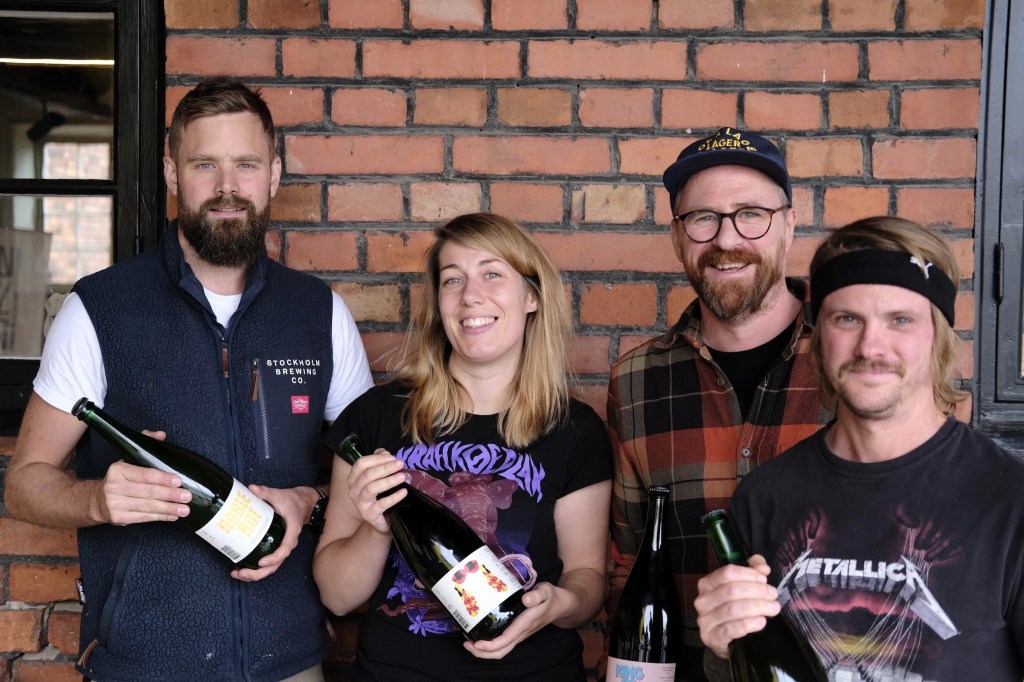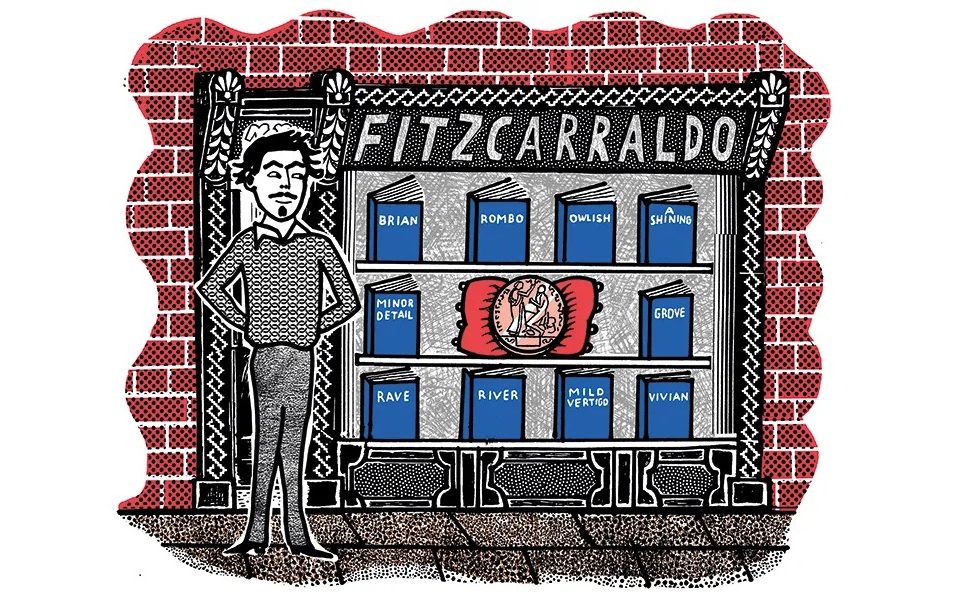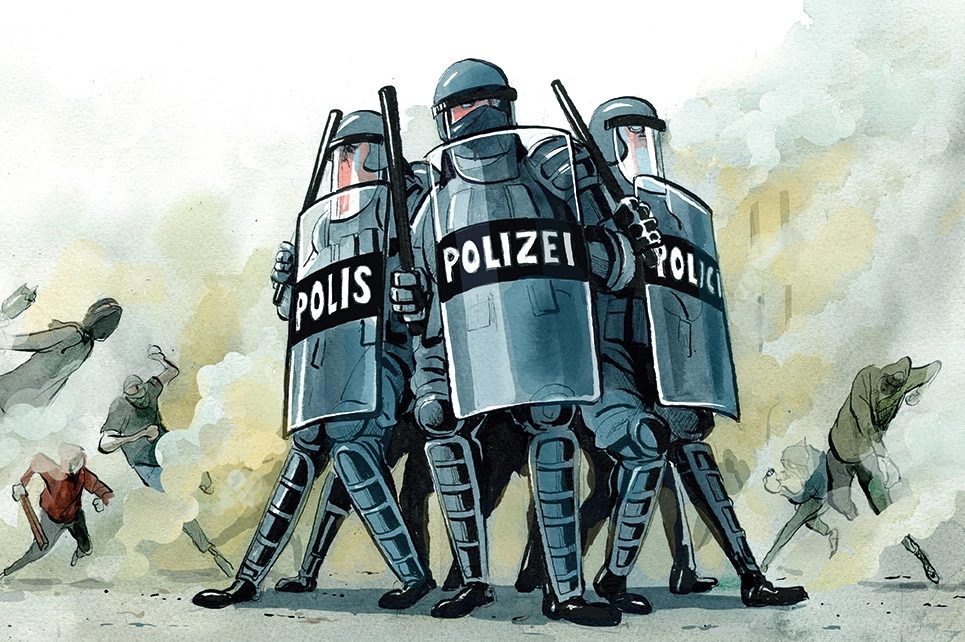Quizzed on how best to assimilate a new culture, travel writer and celebrity chef Anthony Bourdain once uttered the famous line: “Drink heavily with locals whenever possible.” I never met the man, but still I miss him and his deft writing. The Opening a Bottle series is about getting pickled with people far cooler than I am, in whatever city I’ve washed up in.
I land in Stockholm as the leaves start to fade brown, and the mercury is already dropping. My gloveless hands turn alabaster as I doggedly cycle around the island of Djurgården, or “museum island.” I gape at the once-sunken Viking boat. I dodge the ABBA tribute. I take aim at hilltop open air museum Skansen, then ditch my wheels (out of bounds). I swear a lot. I get really fucking cold.
Obligatory spots ticked off, I need a drink. Sweden’s capital is scattered with candlelit wine bars and naughty corners built to hide from this weather. I’d cold emailed British expat Olly Bartlett weeks before; a natural wine veteran now running the first organic-certified brewery in Sweden, who incidentally took on the government to allow beer tastings with customers.
Olly explained: “Under European law, a producer should be able to taste their products with consumers. They said we weren’t farmers. We told them we grew yeast. They agreed; and so, we are yeast farmers.”
License approved, Stockholm Brewing Company paved the way for tastings in the rest of Sweden. Here, state-run liquor monopoly status restricts alcohol sales. Aside from Systembolaget stores, booze can only be bought in restaurants and bars. And so frozen, I rock up.
I tender that I like a niche sour, so he cracks open a bottle of barrel-aged Noble Rot.
“This is aged in old sweet wine barrels from Kiralyudvar in Tokaj, my favorite Tokaj producer,” Olly begins.
On the board, loads of lagers, Saison, classic UK bitters, and lower ABV Pale Ales. Fans of The Kernel in London, Bristol’s Lost and Grounded or Brasserie de la Senne in Brussel will love this place. I do already.
“Stockholm Brewing aims to be the brewery for the local people of Stockholm. We want to find a pint for everyone. We seek balance and drinkability over hype and trends,” says Olly.
Speaking of hype and trends, he gives me a quick rundown of Stockholm’s districts.
Söder is “uber hip and expensive,” including SoFo (the area south of Folkungagatan). Here fashion mavens descend on ACNE, Nudie, Days March and Grandpa. He likens Östermalm to London’s West End, or Chelsea (designer brands, established nightlife, lots of money).
Vasastan is the place for good eating. Beautiful old town Gamla Stan is “touristy as hell.” Further south of Söder you’ll find the “cool kids” who’ve moved out for a bit more space.
Pouring and distributing wine for a couple of decades before taking on the brewery, I hazard a guess he knows where to drink it.
“At Bar Ninja, Gemla, Savant, Grus Grus, Chewie’s bar and Tyge och you can have interesting wines any day of the week.”
It wasn’t always this way, he adds.
“The Stockholm scene has developed so much in the last fifteen years. Back then, you’d struggle to find my kind of wine in many places. Whether it is the OG sommelier crew who have opened their minds or the new generation of somms coming through, they are more curious.”
Olly’s kind of wine is natural — that is, with no herbicides or pesticides.
“People get hung up on the natural thing: it’s quite simple really. Healthy soil is everything. No added yeast and either no or little sulphur.”
Some find the concept intimidating, I muse.
“People shouldn’t get freaked out. Sometimes the fault lies with the aficionado who introduces their curious friend to nat wines and picks something very extreme. Ease them in, gently! There is plenty of time to get funky later.”
Right, but you’ve been getting funky for decades.
“I was studying wine in 2007 in London and met a lady called Kate Thal who ran Green and Blue Wines in East Dulwich. It was London’s first bar and shop specializing in those wines. She was a complete trailblazer and introduced me to producers who I know personally now, and whose wines I still drink.”
What’s different about drinking in Stockholm?
“Compared to the hedonism of say, London, drinking in Stockholm is a little more about tasting nice things as opposed to getting smashed. A bit ‘lagom,’ if you like (the Swedish concept of balance and moderation). The Swedes appreciate quality over quantity in general.”
You’ve raised a glass all over the world. Is there a bottle that stands out to you, that crystallized a moment in your life?
“It would have to be drinking Saint Epine 2001 with Herve and Beatrice Souhaut at their place in the Northern Rhone. NR Syrah has long been a go-to and it was great to share this moment with them. They are so humble and make it seem so simple, even down to the label. A world away from the ‘look at me’ label bottles of some producers.”
For Olly, where is the best wine coming from?
“Favorite regions — with my experience working with Spanish wines — would be Ribeira Sacra, famous for its ethereal lighter expression of Mencia. Imagine Pinot and Syrah had a child.
“From producers like Envintate and Guimaro, and the two amazing Tenerife appellations Taganan and the Orotava Valley (Envinate again, and Suertes del Marques). Also, anything Sherry.
“Aside from Spain, Pedro Marques wines from Vale Da Capucha, just outside Lisbon — salty, tangy minerals. Amazing.
“Then Northern Rhone (Herve Souhaut, Dard et Ribo) Beaujolais (usual suspects Lapierre, Foillard, Balagny), Sicily (Vino Di Anna, Arianna Occhipinti), Sangiovese from Tuscany (Podere Le Boncie, Il Paradiso di Manfedi, Le Pergole Torte), Testalonga El Bandito in South Africa… this is too hard!”
“I’ve got two nights left here. Where are we going?” I joke.
“Apart from the taproom, Akkurat, the Old Brewer and Zum Fransiskaner (amazing German lager selection) for beer. Cafe Nizza, Bar Ninja and Gemla for wine. There is a new spot just opened called Triton on Söder that I haven’t got to yet, run by some mates. I’ve heard good things!”
And go to them we do. I remember little, but won’t forget it. Next time, I’ll pack gloves.

























